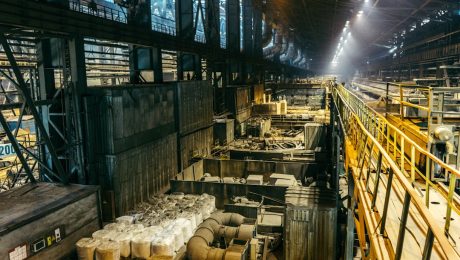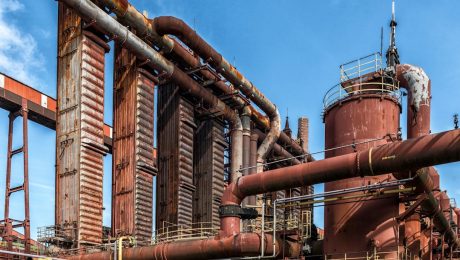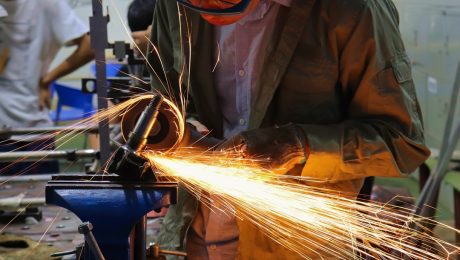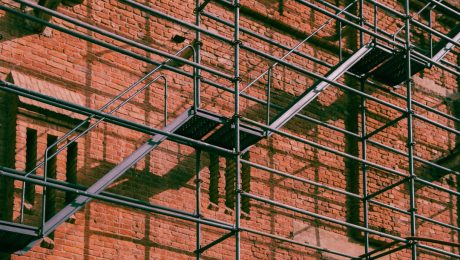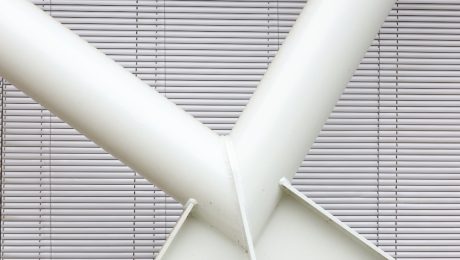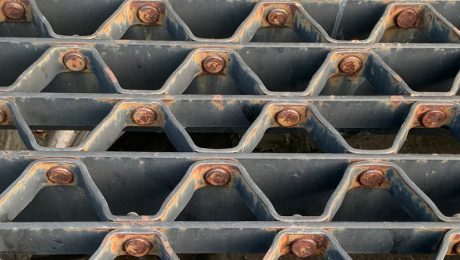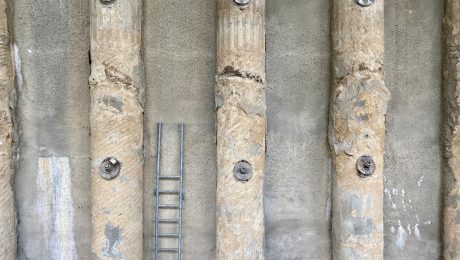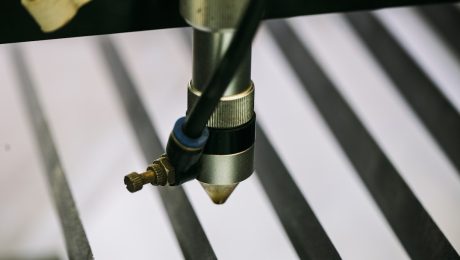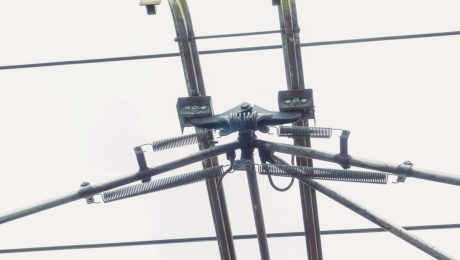Turkey’s steel industry has undergone a remarkable transformation, evolving from a relatively small player to a significant force in the global steel market. This ascent is a testament to strategic investments, technological advancements, and a commitment to meeting international standards. This blog post delves into the key aspects of Turkish steel’s presence on the world stage, examining its strengths, challenges, and future prospects.
The Strength of Turkish Steel Production
Turkey’s steel production capacity has steadily increased over the past few decades. This growth is fueled by substantial investments in modern steel mills equipped with advanced technologies. The country boasts a diverse range of steel production facilities, capable of producing a wide variety of steel grades, including flat rolled products like coils and sheets, and long products such as rebar and wire rod. This versatility allows Turkish steel producers to cater to a broad spectrum of industries, from construction and automotive to shipbuilding and energy. Furthermore, the strategic geographical location of Turkey, bridging Europe and Asia, provides significant logistical advantages for exporting steel to diverse markets.
Exporting Turkish Steel: Global Reach and Market Share
Turkey is a major exporter of steel, with its products reaching numerous countries across the globe. The country’s competitive pricing, often driven by lower production costs compared to some European or North American counterparts, makes it an attractive supplier. However, Turkey’s export strategy extends beyond simply offering competitive prices. Turkish steel producers are increasingly focusing on quality and compliance with international standards, building strong relationships with buyers and establishing a reputation for reliability. Key export markets include the Middle East, North Africa, and Europe, but Turkish steel is also making inroads into other regions. The ongoing diversification of export destinations mitigates risks associated with reliance on any single market.
Key Players and Industry Structure in Turkish Steel
The Turkish steel industry is comprised of both large integrated steel mills and smaller specialized producers. Several major corporations dominate the landscape, controlling a significant portion of the national production capacity. These companies play a crucial role in shaping the industry’s strategies, investments, and overall performance. However, the industry also features a dynamic network of smaller players specializing in niche products or serving specific regional markets. This mix of large corporations and smaller specialized producers contributes to the diversity and resilience of the Turkish steel sector. The government also plays a significant role through policy initiatives aimed at supporting the industry’s growth and competitiveness.
Challenges and Opportunities for Turkish Steelmakers
Despite its impressive growth, the Turkish steel industry faces several challenges. Fluctuations in global steel prices, influenced by factors such as economic downturns and changes in global demand, can significantly impact profitability. Competition from other steel-producing nations, particularly those with lower labor costs, remains a persistent concern. Furthermore, environmental regulations and the need for sustainable practices are placing increasing pressure on steel producers to adopt more environmentally friendly production methods. However, these challenges also present opportunities. The growing global demand for sustainable steel, coupled with ongoing technological advancements in steel production, creates a pathway for Turkish steelmakers to enhance their competitiveness by investing in greener technologies and offering environmentally friendly products. This presents a significant opportunity to attract environmentally conscious buyers.
The Future of Turkish Steel in the Global Market
The future of Turkish steel in the global market appears promising, provided the industry continues to adapt and innovate. Continued investment in modernizing production facilities, embracing sustainable practices, and focusing on high-value-added products will be crucial for maintaining competitiveness. Strategic partnerships with international companies and participation in global value chains will also contribute to the industry’s long-term growth. The Turkish government’s support for the steel industry, through policy initiatives and infrastructure development, will play a vital role in ensuring its continued success. Furthermore, effective management of environmental concerns and a commitment to sustainability will be key to securing long-term market share and maintaining a positive global image.
In conclusion, the Turkish steel industry has established itself as a significant player in the global market. While challenges exist, the industry’s adaptability, strategic investments, and commitment to innovation position it for continued growth and success in the years to come.
Tags: Turkish steel, global steel market, steel exports, Turkish steel industry, steel production
body { font-family: sans-serif; line-height: 1.6; }
h1, h2, h3 { color: #333; }
img { max-width: 100%; height: auto; }
Oil refineries are complex and demanding environments, operating under intense pressure and temperature conditions. At the heart of these operations lies a vast network of piping systems, with steel pipes forming the backbone of this critical infrastructure. From transporting crude oil to distributing refined products, steel pipes are indispensable for the efficient and safe functioning of any refinery.
Types of Steel Pipes Used in Oil Refineries
The choice of steel pipe depends on the specific application within the refinery. Several types are commonly used, each possessing unique properties tailored to withstand the harsh conditions:
- Carbon Steel Pipes: These are the most common type due to their strength, weldability, and relatively low cost. However, their susceptibility to corrosion limits their use in certain applications.
- Alloy Steel Pipes: These pipes contain alloying elements like chromium, molybdenum, and nickel, significantly enhancing corrosion resistance and high-temperature strength. They are often used in high-pressure and high-temperature sections of the refinery.
- Stainless Steel Pipes: Offering superior corrosion resistance, stainless steel pipes are ideal for handling corrosive chemicals and fluids. They are particularly valuable in applications involving sulfur compounds and other reactive substances.
- High-Yield Strength Steel Pipes: These pipes offer enhanced strength-to-weight ratios, allowing for smaller pipe diameters and reduced material costs while maintaining structural integrity.
Applications of Steel Pipes Across Refinery Processes
Steel pipes play a critical role in virtually every stage of the oil refining process. Their applications include:
- Crude Oil Transportation: Large-diameter pipes carry crude oil from storage tanks to processing units.
- Process Piping: A complex network of smaller-diameter pipes transfers various intermediate and refined products between different processing units (distillation columns, reactors, etc.).
- Heat Exchangers: Steel pipes form the core of heat exchangers, facilitating efficient heat transfer during various refining processes.
- Pressure Vessels: Steel pipes contribute to the construction of pressure vessels used for storage and reaction processes.
- Product Distribution: Steel pipes transport finished products (gasoline, diesel, kerosene, etc.) to storage tanks and loading facilities.
Challenges and Considerations in Steel Pipe Selection and Maintenance
The demanding refinery environment presents several challenges related to steel pipe selection and maintenance:
- Corrosion: Exposure to corrosive substances like sulfur compounds, acids, and salts necessitates the selection of corrosion-resistant steel grades or the implementation of corrosion protection measures (coatings, linings, cathodic protection).
- High Temperatures and Pressures: Pipes must withstand extreme temperatures and pressures without compromising structural integrity. Careful selection of appropriate steel grades and rigorous quality control are essential.
- Safety Regulations: Strict adherence to safety regulations and industry standards is paramount. Regular inspections, maintenance, and leak detection systems are crucial to prevent accidents.
- Cost Optimization: Balancing the need for durable, high-performance pipes with cost-effectiveness is a key consideration.
Ensuring Safety and Compliance with Industry Standards
The safety of personnel and the environment is paramount in oil refineries. Strict adherence to industry standards and regulations is non-negotiable. This includes:
- Regular Inspections: Periodic inspections using non-destructive testing methods (NDT) like ultrasonic testing and radiographic testing help detect flaws and prevent potential failures.
- Material Traceability: Maintaining accurate records of pipe materials and their properties ensures compliance with industry standards and facilitates effective maintenance planning.
- Welding and Fabrication: Highly skilled welders and stringent quality control procedures are required to ensure the integrity of pipe welds.
- Leak Detection Systems: Advanced leak detection systems are critical for early detection of leaks, preventing environmental damage and ensuring operational safety.
Future Trends in Steel Pipe Technology for Oil Refineries
The oil refining industry is constantly evolving, and steel pipe technology is adapting to meet the challenges of enhanced efficiency, sustainability, and safety. Future trends include:
- Advanced Materials: Research into new steel alloys with enhanced corrosion resistance and high-temperature strength is ongoing.
- Smart Pipes: The integration of sensors and monitoring systems into steel pipes allows for real-time monitoring of pressure, temperature, and other critical parameters, enhancing predictive maintenance capabilities.
- Sustainable Practices: The industry is increasingly focusing on minimizing environmental impact through the use of recycled steel and improved corrosion management techniques.
- Digitalization and Automation: Digital twins and advanced simulation tools are being used to optimize pipe design, maintenance schedules, and overall refinery operations.
In conclusion, steel pipes are the unsung heroes of oil refineries, silently working to ensure the efficient and safe operation of these complex facilities. Understanding their diverse types, applications, challenges, and future trends is crucial for maintaining the integrity and longevity of these critical systems.
In a world increasingly focused on sustainability and reducing waste, designing products for long life is paramount. Steel, a robust and versatile material, offers exceptional potential for creating durable, long-lasting goods. However, simply using steel isn’t enough; intelligent design and careful material selection are crucial for maximizing its lifespan. This comprehensive guide explores the key considerations in designing steel products built to withstand the test of time.
1. Material Selection: The Foundation of Longevity
The journey to creating a long-life steel product begins with choosing the right steel grade. Different steel alloys possess varying properties, influencing their resistance to corrosion, wear, and fatigue. High-strength low-alloy (HSLA) steels offer a superior strength-to-weight ratio, reducing material usage and enhancing durability. For applications exposed to harsh environments, stainless steels, particularly those with higher chromium content, provide exceptional corrosion resistance. Consider the specific application and environmental factors (humidity, temperature, chemical exposure) when selecting the optimal steel grade. Life cycle assessments (LCAs) can help evaluate the environmental impact of different steel options and guide informed decision-making.
2. Corrosion Protection: Shielding Steel from the Elements
Corrosion is the primary enemy of steel’s longevity. Implementing effective corrosion protection strategies is non-negotiable for extending the lifespan of any steel product. Several techniques are available, each with its strengths and weaknesses. Galvanization, a process of applying a zinc coating, provides excellent sacrificial protection, preventing rust formation. Powder coating offers a durable, aesthetically pleasing finish that also acts as a barrier against corrosion. Other options include paint systems, specialized coatings, and cathodic protection (for submerged or buried structures). The choice of corrosion protection method should be tailored to the specific application and environmental conditions, considering factors like cost, longevity, and aesthetic requirements.
3. Optimized Design for Enhanced Durability
The design itself plays a pivotal role in determining a steel product’s lifespan. Careful consideration of stress points, fatigue resistance, and ease of maintenance are essential. Finite element analysis (FEA) can be invaluable in predicting stress distribution and identifying potential weak points during the design phase. Avoiding sharp corners and abrupt changes in geometry reduces stress concentration, enhancing fatigue resistance. Proper design for manufacturing (DFM) ensures that the product can be fabricated efficiently and accurately, minimizing defects that could compromise its longevity. Furthermore, incorporating features that facilitate easy maintenance and repair, such as readily accessible components, can significantly prolong the product’s useful life.
4. Manufacturing Precision: Ensuring Quality and Consistency
The manufacturing process significantly impacts the final product’s quality and durability. Precise fabrication techniques, such as robotic welding and laser cutting, ensure accurate dimensions and minimal defects. Quality control measures throughout the manufacturing process are essential to identify and rectify any flaws that could compromise the product’s longevity. Regular inspections and non-destructive testing (NDT) techniques, such as ultrasonic testing and radiographic inspection, can detect hidden flaws that might not be visible to the naked eye. Employing skilled labor and adhering to strict quality standards are vital for producing steel products that meet the highest durability requirements.
5. Sustainable Practices: Minimizing Environmental Impact
Designing for longevity is intrinsically linked to sustainability. By creating products that last longer, we reduce the need for frequent replacements, minimizing resource consumption and waste generation. Choosing steel, a highly recyclable material, further contributes to a sustainable approach. Incorporating recycled steel content in the manufacturing process reduces the demand for virgin materials and lowers the overall carbon footprint. Sustainable design principles also encourage the use of energy-efficient manufacturing processes and the minimization of hazardous waste generation. By prioritizing sustainability, we can create steel products that are not only durable but also environmentally responsible.
Designing long-life steel products requires a holistic approach, encompassing material selection, corrosion protection, optimized design, precise manufacturing, and sustainable practices. By carefully considering these factors, we can create steel products that stand the test of time, providing years of reliable service and minimizing environmental impact. This commitment to durability contributes to a more sustainable future, reducing waste and conserving valuable resources.
SEO Keywords:
long-life steel, durable steel products, steel design, steel manufacturing, corrosion resistance
The success of any construction project hinges significantly on the careful selection of materials. Choosing the right materials isn’t just about aesthetics; it’s a complex decision involving factors like durability, cost-effectiveness, sustainability, and adherence to building codes. This comprehensive guide will delve into the key aspects of material selection to help you make informed decisions and build structures that are both beautiful and resilient.
Understanding Project Requirements: The Foundation of Material Selection
Before even considering specific materials, a thorough understanding of the project’s requirements is paramount. This involves analyzing several key aspects:
- Project Scope and Design: The intended use of the structure (residential, commercial, industrial) directly influences material choices. A high-rise building will demand different materials than a single-family home.
- Structural Integrity: The chosen materials must meet or exceed the structural requirements dictated by engineering calculations and building codes. This involves considering factors like load-bearing capacity, compressive strength, and tensile strength.
- Environmental Conditions: Climate plays a crucial role. Materials must withstand extreme temperatures, humidity, rainfall, snowfall, and seismic activity in the region. Corrosion resistance is also a vital factor in coastal areas or regions with high air pollution.
- Budgetary Constraints: Cost is a significant constraint. While superior materials often offer long-term benefits, it’s essential to balance quality with budget limitations. A detailed cost analysis, considering both initial investment and lifecycle costs, is crucial.
- Maintenance Requirements: Some materials require more maintenance than others. Consider the long-term costs of cleaning, repairs, and replacements when making your selection. Low-maintenance materials can significantly reduce overall expenses.
Durability and Longevity: Choosing Materials that Endure
Durability is a critical factor. Materials should be resistant to wear and tear, weathering, and degradation. This translates to a longer lifespan, reduced maintenance costs, and improved return on investment. Consider the following:
- Material Properties: Understanding the inherent properties of materials – their strength, hardness, resistance to chemicals, and susceptibility to damage – is crucial for ensuring long-term durability.
- Weather Resistance: Materials exposed to the elements need to be resistant to UV degradation, moisture damage, and temperature fluctuations. Coatings and treatments can enhance weather resistance.
- Fire Resistance: In many building codes, fire resistance is a mandatory consideration. Materials with high fire ratings are essential for safety and structural integrity in case of fire.
- Pest Resistance: Materials should ideally resist infestation by insects, rodents, and other pests that can compromise structural integrity and hygiene.
Sustainability and Environmental Impact: Building Green
The environmental impact of construction materials is increasingly important. Sustainable choices reduce the carbon footprint, conserve resources, and promote healthier indoor environments. Key considerations include:
- Embodied Carbon: This refers to the greenhouse gas emissions associated with the extraction, processing, transportation, and manufacturing of building materials. Opting for materials with lower embodied carbon is crucial for reducing the overall environmental impact.
- Recycled and Reclaimed Materials: Utilizing recycled or reclaimed materials significantly reduces the demand for new resources and minimizes waste. This contributes to both environmental sustainability and cost savings.
- Renewable Materials: Materials derived from renewable resources, such as bamboo or sustainably harvested timber, offer a more environmentally friendly alternative to non-renewable materials.
- Energy Efficiency: Consider materials that contribute to energy efficiency in the building, such as high-performance insulation or low-emissivity glass.
Aesthetic Considerations: Balancing Form and Function
While functionality is paramount, the aesthetic appeal of materials significantly impacts the overall look and feel of the structure. Consider:
- Color and Texture: The color and texture of materials significantly influence the visual impact. Careful selection ensures a harmonious and aesthetically pleasing design.
- Material Finishes: Finishes, such as painting, staining, or polishing, can enhance the appearance and durability of materials.
- Architectural Style: The chosen materials should complement the overall architectural style of the building, creating a cohesive and visually appealing design.
- Light Reflection and Transmission: Consider how materials interact with light. Some materials reflect light, while others transmit or absorb it, impacting the overall brightness and ambiance of the space.
Cost Analysis and Lifecycle Costs: A Holistic Approach
While initial cost is a factor, a holistic approach requires considering lifecycle costs. This involves evaluating not only the purchase price but also the costs associated with installation, maintenance, repairs, and eventual replacement over the lifetime of the structure. Factors to consider include:
- Initial Material Costs: The upfront cost of purchasing the materials.
- Installation Costs: Labor costs associated with installing the materials.
- Maintenance Costs: Ongoing costs associated with cleaning, repairs, and upkeep.
- Replacement Costs: Costs associated with replacing materials at the end of their lifespan.
- Energy Costs: The impact of material choices on energy consumption and associated costs.
By carefully considering all these factors, you can make informed material selections that optimize the performance, longevity, sustainability, and aesthetic appeal of your construction projects. Remember that a well-informed decision minimizes risks and maximizes long-term value.
body {
font-family: sans-serif;
line-height: 1.6;
}
h1, h2, h3 {
color: #333;
}
The wind energy industry is booming, and its continued success hinges on the reliable performance and efficient manufacturing of its components. While the blades often steal the spotlight, a crucial, often overlooked element underpinning the entire structure is the use of steel profiles. These precisely engineered shapes of steel form the backbone of wind turbines, contributing significantly to their stability, durability, and overall efficiency. This post delves into the critical role of steel profiles in wind energy projects.
1. The Indispensable Role of Steel Profiles in Wind Turbine Towers
Wind turbine towers are subjected to immense stresses from wind loads, vibrations, and the weight of the nacelle and rotor. Steel profiles, particularly hollow sections like square, rectangular, and circular tubes, are ideally suited for this demanding application. Their high strength-to-weight ratio allows for the construction of tall, slender towers that can withstand extreme weather conditions without excessive material usage. The hollow design also optimizes weight distribution, minimizing material costs and transportation challenges. Common steel grades used include high-strength low-alloy (HSLA) steels and weathering steels, chosen for their superior strength, corrosion resistance, and weldability.
The design and fabrication of these towers involve complex engineering calculations to ensure structural integrity. Finite element analysis (FEA) is frequently employed to simulate real-world loading conditions and optimize the profile selection and tower geometry for maximum efficiency and safety.
2. Steel Profiles in Nacelle and Turbine Components
Beyond the tower, steel profiles play a vital role in the nacelle, the housing unit at the top of the tower containing the gearbox, generator, and other key components. These profiles contribute to the structural strength and rigidity of the nacelle, ensuring the smooth and efficient operation of the internal machinery. Furthermore, various smaller steel profiles are used in the internal framework supporting the generator, the braking system, and other critical components.
Steel’s versatility also allows for the creation of custom profiles tailored to specific needs. This precision engineering ensures optimal fit and functionality within the often-complex arrangement of the nacelle’s internal systems. This minimizes weight, improves efficiency, and reduces manufacturing costs.
3. Manufacturing Processes and Quality Control
The manufacturing of steel profiles for wind turbine applications requires precise control over dimensions and material properties. Common manufacturing methods include hot-rolled and cold-formed processes. Hot-rolled profiles offer high strength and are suitable for larger sections, while cold-formed profiles allow for greater precision and complex shapes. Advanced techniques like laser cutting and robotic welding ensure high accuracy and repeatability, minimizing defects and improving overall quality.
Rigorous quality control measures are essential throughout the manufacturing process. Non-destructive testing (NDT) methods, such as ultrasonic testing and magnetic particle inspection, are employed to detect any internal flaws or imperfections that could compromise the structural integrity of the components. This ensures the longevity and reliability of wind turbines, minimizing downtime and maintenance costs.
4. The Importance of Corrosion Protection in Wind Energy Applications
Wind turbines are exposed to harsh environmental conditions, including wind, rain, salt spray (especially in coastal areas), and temperature fluctuations. Corrosion is a major concern, and therefore, effective corrosion protection is crucial for extending the lifespan of steel profiles. Common methods include galvanizing (hot-dip galvanizing), painting, and the use of weathering steels that form a protective oxide layer over time.
The choice of corrosion protection method depends on factors such as the specific environment, the steel grade used, and the cost-effectiveness of the chosen method. Regular inspections and maintenance are also essential to ensure the continued effectiveness of the corrosion protection system.
5. The Future of Steel Profiles in the Wind Energy Sector
As the wind energy industry continues to grow, the demand for high-performance steel profiles will increase. Research and development efforts are focused on developing new steel grades with even higher strength-to-weight ratios, improved corrosion resistance, and enhanced weldability. The use of advanced manufacturing techniques, such as additive manufacturing (3D printing), is also being explored to create complex and customized profiles that could further optimize wind turbine design and efficiency.
Furthermore, the industry is exploring sustainable practices in steel production, aiming to reduce the carbon footprint associated with steel manufacturing. This includes using recycled steel and developing more energy-efficient production processes. The future of steel in wind energy is bright, with ongoing innovation promising even more efficient and sustainable wind power generation.
Tags: Steel profiles, wind turbine, wind energy, steel construction, renewable energy
The world of industrial piping is constantly evolving, driven by the need for stronger, lighter, and more durable materials. Carbon fiber-coated steel pipes represent a significant advancement in this field, offering a compelling combination of the inherent strength of steel with the exceptional properties of carbon fiber. This innovative technology is transforming various industries, promising enhanced performance and longevity in demanding applications.
Understanding the Synergy: Steel and Carbon Fiber
The strength of carbon fiber-coated steel pipes lies in the synergistic relationship between its two core components. Steel provides the foundational strength and structural integrity, while the carbon fiber coating acts as a protective shield and a significant strength enhancer. Steel, known for its high tensile strength and compressive strength, forms the base pipe. The carbon fiber layer, applied using advanced techniques like filament winding or prepreg wrapping, significantly enhances the pipe’s overall performance. Carbon fiber boasts an incredibly high tensile strength-to-weight ratio, meaning it’s exceptionally strong for its weight. This combination results in a pipe that is both robust and lightweight, making it ideal for a variety of applications.
Enhanced Durability and Corrosion Resistance: A Key Advantage
One of the most significant advantages of carbon fiber-coated steel pipes is their exceptional resistance to corrosion. Steel pipes, while strong, are susceptible to rust and degradation, especially in harsh environments. The carbon fiber coating acts as a barrier, protecting the underlying steel from exposure to moisture, chemicals, and other corrosive agents. This dramatically extends the lifespan of the pipe, reducing the need for frequent replacements and minimizing maintenance costs. Furthermore, the carbon fiber layer enhances the pipe’s resistance to abrasion and impact damage, making it suitable for applications where it might be subjected to significant wear and tear.
Manufacturing Process: Precision and Innovation
The manufacturing process for carbon fiber-coated steel pipes requires precision and advanced technology. The process typically begins with the fabrication of the steel pipe to the desired specifications. Then, the carbon fiber layer is applied. Several methods exist, including filament winding, where continuous carbon fiber strands are wound onto the steel pipe under tension, and prepreg wrapping, where pre-impregnated carbon fiber sheets are wrapped around the pipe and cured in an autoclave. The curing process involves applying heat and pressure to bond the carbon fiber to the steel and to fully cure the resin matrix. Quality control measures throughout the process are crucial to ensure the integrity and performance of the final product. The precise application technique and the quality of the carbon fiber and resin significantly impact the overall performance and durability of the finished pipe.
Applications Across Industries: Where Innovation Meets Need
The versatility of carbon fiber-coated steel pipes makes them suitable for a wide range of applications across diverse industries. In the oil and gas industry, these pipes are used for transporting high-pressure fluids and gases, where their strength and corrosion resistance are critical. They find applications in the chemical processing industry, handling corrosive chemicals without degradation. The construction and infrastructure sectors benefit from their lightweight yet robust nature, making them ideal for use in bridges, pipelines, and other large-scale projects. Furthermore, they are increasingly used in the automotive and aerospace industries where weight reduction and high strength are paramount.
Cost-Effectiveness: A Long-Term Investment
While the initial cost of carbon fiber-coated steel pipes might be higher than that of traditional steel pipes, the long-term cost-effectiveness is undeniable. Their enhanced durability and corrosion resistance significantly reduce the need for frequent replacements and maintenance, leading to substantial savings over the pipe’s lifespan. Reduced downtime due to fewer repairs and replacements also contributes to overall cost savings. The increased lifespan and reduced maintenance costs often outweigh the higher initial investment, making them a financially sound choice, especially in demanding applications where failure is not an option.
In conclusion, carbon fiber-coated steel pipes represent a significant advancement in piping technology, offering a compelling combination of strength, durability, and corrosion resistance. Their versatility and long-term cost-effectiveness make them a valuable asset across various industries, paving the way for more efficient, reliable, and sustainable infrastructure and industrial processes.
body {
font-family: sans-serif;
line-height: 1.6;
}
h1, h2, h3 {
color: #333;
}
h1 {
font-size: 2.5em;
}
h2 {
font-size: 2em;
}
h3 {
font-size: 1.5em;
}
Epoxy-coated pipes offer superior corrosion resistance and extended lifespan compared to their uncoated counterparts. Understanding the factors that influence their longevity is crucial for effective infrastructure planning and maintenance. This comprehensive guide delves into the life expectancy of epoxy-coated pipes, providing valuable insights for engineers, contractors, and property owners.
Factors Affecting the Life Expectancy of Epoxy-Coated Pipes
The lifespan of epoxy-coated pipes isn’t a fixed number; it’s highly dependent on several interacting factors. These include:
- Pipe Material: The underlying pipe material (e.g., steel, cast iron) significantly impacts the overall system’s durability. Steel pipes, while strong, are susceptible to corrosion without proper coating. Cast iron, while inherently more resistant, can still benefit from epoxy coating to extend its life.
- Epoxy Coating Quality: The quality of the epoxy coating itself is paramount. A well-applied, thick, and properly cured epoxy coating offers superior protection against corrosion and environmental damage. Poorly applied or thin coatings are more vulnerable to cracking and degradation.
- Environmental Conditions: Exposure to harsh chemicals, extreme temperatures, UV radiation, and soil conditions can all affect the longevity of the epoxy coating. Pipes buried in highly acidic soil will degrade faster than those in neutral soil.
- Installation Practices: Proper installation is critical. Damage during handling, transportation, or installation can compromise the epoxy coating, creating entry points for corrosion. Improper trenching and backfilling can also lead to premature failure.
- Internal Pressure and Flow Rate: High internal pressure and rapid flow rates can put stress on the pipe and the epoxy coating, potentially leading to cracking or delamination.
Typical Lifespan and Expected Service Life
While a definitive lifespan is difficult to pinpoint, epoxy-coated pipes, when properly installed and maintained, can boast a significantly longer service life compared to uncoated pipes. Estimates often range from 50 to 100 years, or even longer, depending on the factors discussed above. However, it’s essential to conduct regular inspections and maintenance to ensure the continued integrity of the coating and the underlying pipe.
Maintenance and Inspection Strategies for Extended Lifespan
Proactive maintenance is key to maximizing the lifespan of epoxy-coated pipes. This includes:
- Regular Inspections: Visual inspections should be conducted periodically to check for signs of damage, such as cracks, blisters, or corrosion. More thorough inspections, potentially involving non-destructive testing methods, might be necessary depending on the application and risk assessment.
- Cathodic Protection: For buried steel pipes, cathodic protection can be implemented to further mitigate corrosion. This involves applying an electrical current to prevent the pipe from acting as an anode in an electrochemical cell.
- Leak Detection and Repair: Prompt leak detection and repair are vital to prevent further damage and extend the pipe’s lifespan. Leaks can weaken the pipe structure and allow corrosive agents to penetrate the epoxy coating.
- Coating Repair: Minor damage to the epoxy coating can often be repaired using specialized epoxy repair kits. However, significant damage may require more extensive repairs or even pipe replacement.
Common Issues and Potential Failures
Despite their durability, epoxy-coated pipes can experience certain issues that can shorten their lifespan. These include:
- Coating Degradation: Exposure to UV radiation, chemicals, or physical damage can lead to the degradation of the epoxy coating, making the underlying pipe vulnerable to corrosion.
- Cracking and Delamination: Stress from internal pressure, soil movement, or thermal expansion can cause cracks or delamination of the epoxy coating.
- Corrosion Under Coating (CUC): This occurs when corrosion starts beneath the epoxy coating, often due to imperfections or damage in the coating itself. CUC can be difficult to detect and can lead to significant pipe degradation.
- Blistering and Void Formation: Improper application or inadequate curing of the epoxy coating can result in blistering and void formation, reducing the coating’s protective properties.
Choosing the Right Epoxy Coating for Your Project
The selection of the appropriate epoxy coating is crucial for ensuring a long service life. Factors to consider include the pipe material, the environmental conditions, the internal fluid being transported, and the anticipated lifespan requirements. Consulting with experienced engineers and coating specialists is highly recommended to select the most suitable epoxy coating for your specific application.
By understanding the factors influencing the lifespan of epoxy-coated pipes and implementing appropriate maintenance strategies, you can significantly extend their service life and optimize the cost-effectiveness of your infrastructure investments.
Tags: epoxy coated pipes, pipe lifespan, corrosion resistance, pipe maintenance, epoxy coating, pipe repair, infrastructure, pipe inspection, cathodic protection
In the heart of every manufacturing facility beats a network of industrial pipes, silently facilitating the flow of crucial materials and processes. The choice of these pipes is far from trivial; it directly impacts efficiency, safety, and the bottom line. This comprehensive guide delves into the critical considerations when selecting industrial pipes for your manufacturing operation.
1. Material Matters: Choosing the Right Pipe for the Job
The material of your industrial pipes is paramount. Different materials offer varying levels of durability, corrosion resistance, temperature tolerance, and pressure handling capabilities. Common choices include:
- Carbon Steel: A cost-effective option widely used for its strength and weldability. Suitable for applications with moderate pressures and temperatures, but susceptible to corrosion in certain environments. Requires proper coating or lining for protection.
- Stainless Steel: Offers superior corrosion resistance and can withstand higher temperatures and pressures than carbon steel. Various grades (e.g., 304, 316) cater to specific needs. More expensive than carbon steel but offers long-term cost savings due to extended lifespan.
- Ductile Iron: Known for its high tensile strength and excellent ductility, making it resistant to impact and vibration. A good choice for underground piping and applications requiring high pressure resistance.
- PVC (Polyvinyl Chloride): A lightweight, corrosion-resistant plastic pipe ideal for handling chemicals and wastewater. However, it has limitations in terms of temperature and pressure tolerance.
- CPVC (Chlorinated Polyvinyl Chloride): Offers improved temperature resistance compared to PVC, making it suitable for hot water applications.
The selection process should carefully consider the specific fluids being transported, the operating temperature and pressure, the environmental conditions, and the overall budget.
2. Pipe Size and Diameter: Optimizing Flow and Efficiency
Determining the appropriate pipe size and diameter is crucial for maximizing flow efficiency and minimizing pressure drop. Undersized pipes can lead to increased pressure, energy consumption, and potential blockages. Oversized pipes, while reducing pressure drop, are more expensive and may require more support structures.
Factors influencing pipe size selection include:
- Flow rate: The volume of fluid to be transported per unit time.
- Fluid viscosity: The thickness or resistance to flow of the fluid.
- Pipe length: Longer pipes experience greater frictional losses.
- Elevation changes: Changes in elevation affect pressure and flow.
Hydraulic calculations are often employed to determine the optimal pipe size for a given application. Consulting with a piping engineer is recommended for complex systems.
3. Industrial Pipe Fittings and Connections: Ensuring a Leak-Free System
Industrial pipe fittings are essential components that connect pipes, change direction, or regulate flow. The choice of fittings is crucial for system integrity and leak prevention. Common types of fittings include:
- Elbows: Used to change the direction of the pipe.
- Tees: Used to branch off from a main pipe.
- Flanges: Used to connect pipes using bolts and gaskets.
- Unions: Used to connect and disconnect pipes easily.
- Valves: Used to control the flow of fluids.
The selection of fittings should consider the material compatibility with the pipes, the pressure rating, and the ease of installation and maintenance. Proper welding or threading techniques are essential to ensure leak-free connections.
4. Regulations and Compliance: Meeting Industry Standards
Industrial piping systems are subject to various regulations and standards aimed at ensuring safety and preventing environmental hazards. Compliance with these regulations is crucial to avoid penalties and ensure the safe operation of the manufacturing facility. Relevant standards may include:
- ASME B31.1: Power Piping
- ASME B31.3: Process Piping
- API 510: Pressure Vessel Inspection Code
- OSHA regulations: Occupational Safety and Health Administration regulations related to piping systems.
Understanding and adhering to these standards is essential during the design, installation, and maintenance of industrial piping systems.
5. Maintenance and Inspection: Extending the Lifespan of Your Piping System
Regular maintenance and inspection are crucial for extending the lifespan of your industrial piping system and preventing costly failures. This includes:
- Visual inspections: Regularly checking for leaks, corrosion, and damage.
- Pressure testing: Periodically testing the system to ensure it can withstand the operating pressure.
- Non-destructive testing (NDT): Employing techniques like ultrasonic testing or radiographic testing to detect internal flaws.
- Cleaning and flushing: Removing debris and buildup from the pipes to maintain flow efficiency.
A well-maintained piping system contributes significantly to reduced downtime, improved safety, and lower operational costs.
By carefully considering these factors, manufacturers can select and maintain the optimal industrial piping system, ensuring efficient operations, enhanced safety, and long-term success.
Tags: Industrial pipes, manufacturing pipes, pipe materials, pipe fittings, piping regulations
The European Union’s CE marking is more than just a symbol; it’s a passport to the vast European market. For steel producers and manufacturers, obtaining CE certification is crucial for demonstrating compliance with essential safety and performance requirements, ensuring product quality, and accessing a lucrative customer base. This comprehensive guide unravels the complexities of CE certification for steel products, providing a clear understanding of the procedures involved.
Understanding the CE Marking for Steel
The CE marking signifies that a product conforms to all applicable EU directives and regulations. For steel products, this typically involves directives related to construction products (CPR), machinery, and pressure equipment, depending on the intended use of the steel. It’s not a quality mark in itself, but rather a declaration of conformity with essential requirements. This means manufacturers must demonstrate that their steel products meet specific safety, health, and environmental standards before affixing the CE mark. Failure to comply can result in significant penalties, including product recalls and legal action.
Key Directives and Regulations Affecting Steel CE Certification
Several key directives and regulations govern the CE certification process for steel products. The most significant is the Construction Products Regulation (CPR) (Regulation (EU) No 305/2011), which harmonizes the marketing of construction products within the EU. This regulation establishes a system of harmonized standards and requires manufacturers to issue a Declaration of Performance (DoP) for their products. Other relevant directives might include the Machinery Directive (2006/42/EC) if the steel is used in machinery components, or the Pressure Equipment Directive (2014/68/EU) if it’s part of pressure vessels. Understanding which directives apply to a specific steel product is crucial for navigating the certification process effectively. Consultations with notified bodies are often recommended to ensure accurate compliance.
The Steps Involved in Obtaining CE Certification for Steel
The process typically involves several key steps:
- Product Assessment: Thoroughly analyze the steel product to identify all applicable EU directives and harmonized standards. This includes assessing its intended use, material properties, and manufacturing processes.
- Conformity Assessment Procedure Selection: Choose the appropriate conformity assessment procedure based on the risk associated with the product and the applicable directives. This could range from internal production control to involvement of a Notified Body for more complex products.
- Testing and Verification: Conduct necessary testing to verify that the steel product meets the required performance and safety standards. This often involves accredited testing laboratories to ensure the results are reliable and accepted by the authorities.
- Compilation of Technical Documentation: Gather all necessary technical documentation, including test reports, design specifications, manufacturing processes, and the Declaration of Performance (DoP).
- Declaration of Conformity: The manufacturer must issue a formal Declaration of Conformity, stating that the product meets all applicable requirements. This declaration is a legal document and carries significant responsibility.
- CE Marking: Once all requirements are met, the CE marking can be affixed to the product and its packaging.
The Role of Notified Bodies in Steel CE Certification
Notified Bodies are independent organizations designated by EU member states to assess the conformity of products with relevant directives. Their involvement depends on the selected conformity assessment procedure. For high-risk steel products, a Notified Body’s involvement is often mandatory. They conduct audits, inspections, and testing to verify the manufacturer’s claims and ensure compliance. Choosing a reputable and accredited Notified Body is crucial for a smooth and successful certification process. The selection of a Notified Body should be carefully considered based on their expertise in the specific type of steel and its application.
Benefits of CE Certification for Steel Products
Obtaining CE certification offers several significant benefits:
- Access to the EU Market: It’s a prerequisite for selling steel products in the European Economic Area (EEA).
- Enhanced Market Credibility: The CE marking demonstrates a commitment to quality, safety, and compliance, boosting customer confidence.
- Reduced Trade Barriers: It simplifies the import and export process, streamlining trade within the EU.
- Competitive Advantage: It can differentiate your products from competitors who lack CE certification.
- Legal Compliance: It ensures adherence to EU regulations, avoiding potential fines and legal repercussions.
Navigating the CE certification process for steel products can be challenging, but understanding the procedures and requirements is essential for success. By carefully following the steps outlined above and seeking expert advice when needed, manufacturers can ensure their products meet the necessary standards and gain access to the vast European market.
Disclaimer: This blog post provides general information and should not be considered legal or professional advice. Always consult with relevant experts and authorities for specific guidance on CE certification for your steel products.
SEO-Friendly Tags:
- CE marking steel
- Steel CE certification
- Construction steel CE
- European steel conformity
- Steel product certification
In industries where equipment faces harsh environments and significant impact forces, the reliability of connection systems is paramount. A failure in a connection can lead to catastrophic consequences, from equipment malfunction to complete system failure. This is where shock-resistant connection systems become crucial. This blog post delves into the design, applications, testing, and future of these vital components.
Understanding the Need for Shock-Resistant Connections
Shock-resistant connection systems are designed to withstand sudden, high-magnitude forces. These forces can stem from various sources, including impacts, vibrations, and sudden accelerations. Traditional connection methods, like simple bolts and screws, often prove inadequate in these scenarios. The consequences of failure can be severe, ranging from minor malfunctions to complete system destruction, potentially leading to injury or significant financial losses. Industries such as aerospace, automotive, military, and construction rely heavily on these robust systems to ensure the safety and reliability of their equipment and infrastructure.
The design of a shock-resistant connection must consider factors like the magnitude and duration of the expected impact, the materials involved, and the overall system geometry. It’s not simply about using stronger materials; it’s about a holistic approach that encompasses material selection, joint design, and manufacturing techniques. The goal is to distribute the impact energy effectively and prevent failure mechanisms like fatigue, fracture, or disengagement.
Design Principles of Shock-Resistant Connections
Several design principles contribute to the shock resistance of connection systems. These include:
- Material Selection: High-strength materials like titanium alloys, high-strength steel, and advanced composites are often employed. These materials possess high yield strength and fatigue resistance, enabling them to withstand significant impact loads.
- Redundancy: Incorporating multiple connection points or utilizing backup systems adds redundancy to the design. If one connection fails, others can compensate, preventing complete system failure.
- Energy Absorption Mechanisms: Designing connections to absorb impact energy is critical. This can be achieved through features like compliant elements (e.g., elastomers or springs), which dissipate energy through deformation, or through the use of materials with high energy absorption capacity.
- Geometric Design: The geometry of the connection plays a crucial role. Features like tapered joints, interlocking designs, and optimized contact areas help distribute stress more effectively and prevent stress concentration points, which are common failure locations.
- Friction and Locking Mechanisms: Incorporating friction and locking mechanisms helps prevent disengagement under shock loads. This might involve using specialized fasteners, locking pins, or interference fits.
Applications of Shock-Resistant Connection Systems
The applications of shock-resistant connection systems are widespread across diverse industries. Some key examples include:
- Aerospace: Securing critical components in aircraft and spacecraft, where impacts from turbulence, landing, and launch are significant.
- Automotive: Connecting structural components in vehicles to withstand collisions and impacts from road hazards.
- Military: Connecting components in armored vehicles and weapons systems to endure extreme shock and vibration.
- Construction: Securing structural elements in buildings and bridges to withstand seismic activity and other extreme events.
- Robotics: Connecting joints and components in robots to handle impacts and vibrations during operation.
Testing and Validation of Shock-Resistant Connections
Rigorous testing is essential to validate the performance of shock-resistant connection systems. Various methods are employed, including:
- Drop Tests: Simulating impacts by dropping the connected components from a specified height.
- Shock Tube Tests: Exposing connections to controlled shock waves to evaluate their response to sudden pressure changes.
- Vibration Tests: Subjecting connections to various frequencies and amplitudes of vibration to assess fatigue resistance.
- Finite Element Analysis (FEA): Using computer simulations to predict the behavior of connections under various load conditions, optimizing designs before physical testing.
- Accelerated Life Testing: Subjecting connections to accelerated cycles of loading and unloading to simulate long-term performance under real-world conditions.
Future Trends in Shock-Resistant Connection Systems
The field of shock-resistant connection systems is constantly evolving. Future trends include:
- Smart Connections: Integrating sensors and electronics into connections to monitor their health and performance in real-time, allowing for predictive maintenance.
- Advanced Materials: Utilizing new materials with enhanced strength, toughness, and energy absorption capabilities, such as carbon nanotubes and graphene-reinforced composites.
- Additive Manufacturing: Employing 3D printing techniques to create complex and customized connection designs with optimized geometries for enhanced shock resistance.
- Self-Healing Materials: Developing connections using self-healing materials that can repair minor damage autonomously, extending their lifespan and reliability.
- Bio-inspired Designs: Studying natural systems to discover new design principles for shock-resistant connections, inspired by the resilience of biological structures.
In conclusion, shock-resistant connection systems are critical components in countless applications, ensuring safety and reliability in challenging environments. Ongoing research and development are pushing the boundaries of what’s possible, leading to even more robust and versatile connection technologies in the future.
Tags: Shock resistant connections, impact resistant fasteners, vibration damping, connection systems design, aerospace engineering

